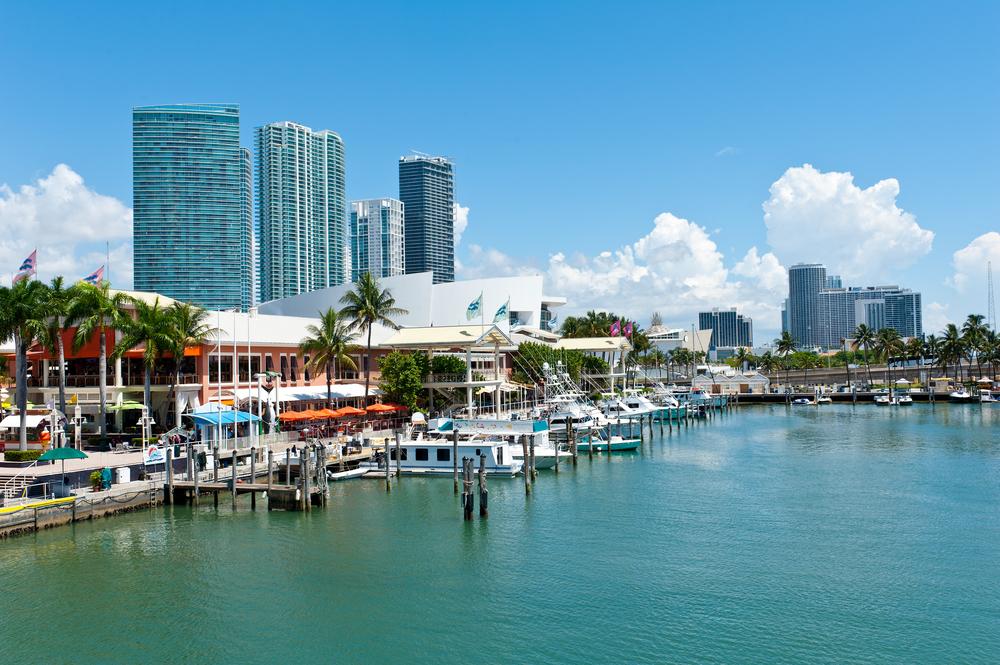Metro Miami leads the way for top retail experience, followed by...
A new analysis has revealed the top 10 metro areas in the United States for “retail therapy,” with Miami-Fort-Lauderdale-West Palm Beach leading the way.
The ranking from StoreageCafe of shopping hubs in the nation show that New York and Los Angeles have serious competition in offering the best retail experience. To compile the list, StorageCafe used data from the U.S. Census, U.S. Bureau of Labor Statistics, and sister companies Smart Growth America, CommercialEdge and Yardi Matrix for the report.
The largest metro areas in the U.S. were measured based on a series of factors, including number of retail establishments per 1,000 residents, number of retail employees per 1,000 residents, retail square footage per capita, local foot traffic, household income, household expenditures on retail purchases, interest in luxury brands as illustrated by online searches, and population density.
“When it comes to shopping options, there’s certainly a wide variety across the U.S., but some locations cater to their clientele much better than others,” said Theodora Tanczos, author of the report. “The best shopping experiences depend on a series of factors, from a broad range of store options to product diversity, purchasing power and competitive pricing, as well as the availability of store personnel to enhance the shopping journey.”
The top 10 metro areas for retail therapy according to StoreageCafe are:
- Miami-Fort Lauderdale-West Palm Beach, Fla.
- Atlanta-Sandy Springs-Roswell, Ga.
- St. Louis, Miss., Ill.
- Denver-Aurora-Lakewood, Colo.
- Boston-Cambridge-Newtown, Mass.
- Minneapolis-St.Paul-Bloomington, Minn.,Wis.
- Los Angeles-Long Beach-Anaheim, Calif.
- Dallas-Fort Worth-Arlington, Texas
- New York-Newark-Jersey City, N.Y., N.J, Pa.
- Tampa-St. Petersburg-Clearwater, Fla.
At the number one spot, the Miami metro area has the largest number of retail stores per 1,000 residents of all analyzed metros: 8,891 establishments spread across the area, offering 1.45 stores for every 1,000 residents. Overall, retail in Miami covers nearly 326 million square feet, roughly equivalent to the size of 5,700 football fields. Shoppers in the area also enjoy a relatively well-connected, walkable environment, with Miami ranking 10th in terms of foot traffic.
In second place, the Atlanta metro area features roughly 6,700 retail establishments, with approximately 1110,000 workers in the sector. Metro Atlanta has almost 305 million square feet of retail space, almost 50 square feet of retail space per resident.
In third place, the St. Louis metro offers shoppers 2,894 retail establishments, equating to over one for every 1,000 residents. Over 52,000 individuals are employed in the retail sector, translating to at least 18 out of every 1,000 residents. Greater St. Louis clinches the top spot for the most retail space per capita, with retail establishments sprawling over 239 million square feet. This translates to over 85 square feet of retail.
Other takeaways from the report include the following:
- Metros with the most retail space: There are nearly 13 billion square feet of gross leasable retail area across the U.S. with more than 5.5 billion in the country's 20 biggest metro areas. Of that, nearly 13% of the retail space (almost 700 million square feet) is in the New York metro area. Following closely behind is the Greater Los Angeles area, with almost 550 million square feet of retail space.
- Metros with the most purchasing power: In the San Francisco metro area, residents have the best retail expenditure-to-income ratio, allocating only 9.7% of their $128,000 household income to retail indulgences. Greater Boston closely follows, with residents dedicating 10.4% of their $104,000 household income to retail expenditures.
- Metro areas that spend the most on retail: The Philadelphia-Camden-Wilmington metro area leads in annual retail expenditures, surpassing $13,000 per household.
The full report from StoreageCafe can be found here.




